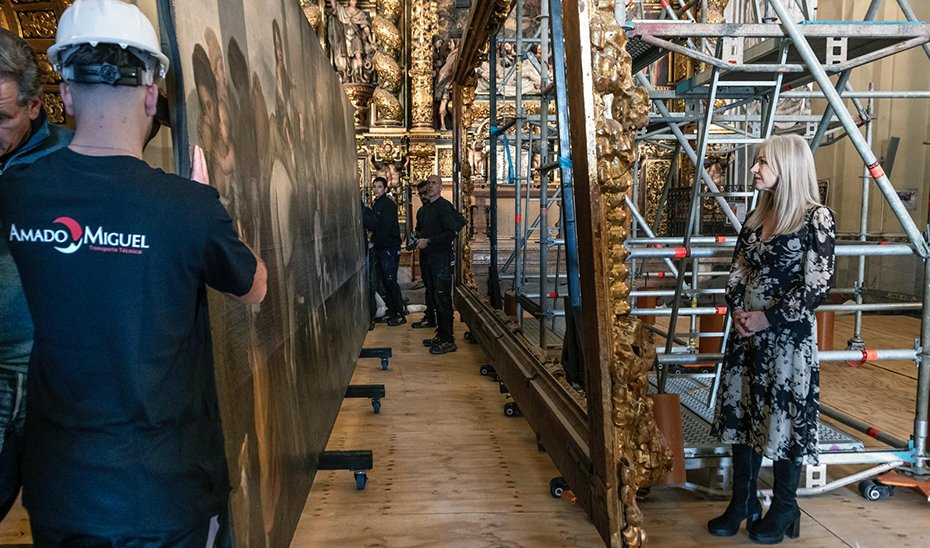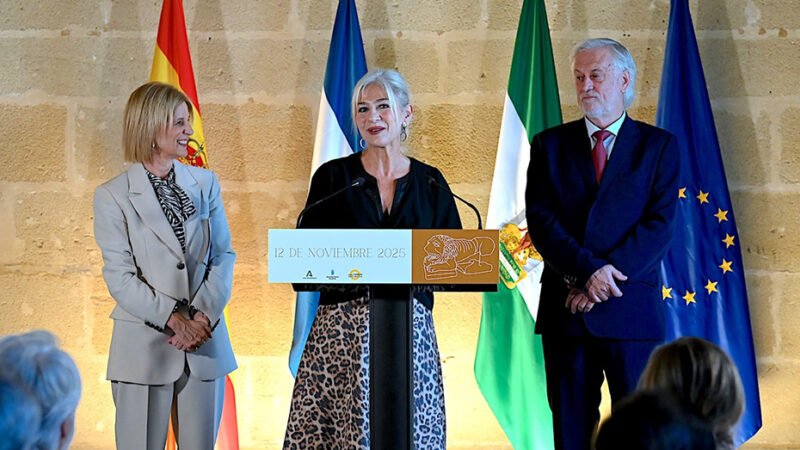La exposición de La Caridad en el Bellas Artes de Sevilla mostrará 16 obras maestras de Murillo, Valdés Leal y más

The Minister of Culture and Sports, Patricia del Pozo, has supervised the dismantling operation of the Church of Lord Saint George and the Hospital of Holy Charity that will be exhibited starting from June 30 at the Museum of Fine Arts in Seville. The exhibition, open until spring 2026, will delve into the iconographic discourse devised by Miguel Mañara around the works of mercy.
Patricia del Pozo has emphasized that «the exhibition will offer a unique opportunity to delve deeply into one of the peaks of the Baroque, allowing direct access to masterpieces by Murillo, Valdés Leal, Pedro Roldán, and Duque Cornejo located at different heights on the walls of the church or forming part of its altarpieces.»
In this regard, the exhibition at the Museum of Fine Arts will be divided into three areas that will address, respectively, the production of Bartolomé Esteban Murillo, Juan de Valdés Leal and the sculptures for the church of the Brotherhood of Holy Charity, a Sevillian institution that originated in the 15th century and is dedicated to the care of the most disadvantaged.
The exhibition will bring together seven canvases by Murillo: ‘The Multiplication of the Loaves and Fishes’, ‘Moses Striking the Rock at Horeb’, ‘Saint Elizabeth of Hungary Healing the Lepers’, ‘Saint John of God Transporting a Sick Person’, ‘The Incarnation’, ‘Child Jesus’ and ‘Child Saint John the Baptist’, and three by Valdés Leal, the two canvases of the ‘Last Things’ (‘End of the Glory of the World’ and ‘In the Blink of an Eye’) plus a portrait of Mañara.
Likewise, the following sculptures will also be exhibited at the Museum: the Virgin of Charity, an anonymous carving whose polychromy was executed by Valdés Leal; the two lamp-bearing angels by Pedro Duque Cornejo, the ‘Ecce Homo’ by the brothers Francisco and Miguel García, and the Christ of Charity, Saint Roch and Saint George, three works by Pedro Roldán.
Minister Del Pozo, accompanied by the head of Holy Charity, Félix Arenado, and the director of the Fine Arts in Seville, Valme Muñoz, attended the dismantling of the canvas ‘Moses Striking the Rock at Horeb’, executed by Murillo and placed several meters high on the Gospel wall of the church’s antechapel.
The canvas – of large dimensions, 236 x 575 centimeters – represents the act of charity of giving drink to the thirsty, transcribing the episode of Moses striking the rock to bring forth water in the desert. The subject of this work is drawn from the Old Testament, from the Book of Exodus (17:1-7), where it narrates Moses’ intervention to quench the thirst of the people of Israel, who were crossing the desert.
Specifically, Moses, along with his brother Aaron, implores the help of the Lord, who instructed him to strike the rock at Horeb with a staff and thus obtain a powerful jet of water. The scene depicts a wide range of attitudes, gestures, and reactions of humans stemming from popular character, expressing, on one hand, those who have quenched their thirst and, on the other hand, those who have not yet drunk.
The exhibition aims to investigate the iconological program that Miguel Mañara conceived for the Church of Lord Saint George at the Hospital of Holy Charity in Seville, where the integration of architecture, sculpture, and painting offers a significant example of the Baroque approach to total artwork and presents a paradigmatic example of public staging of Baroque religiousness.






